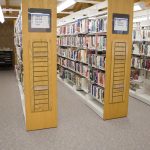15 ways to help cope with educational costs.
Here’s the headline… Education costs money. That’s just a fact which you need to realize and accept. That said, it doesn’t have to cost much. Here are 15 simple ways to get as much bang for your buck as you can as you can to help you cope with educational costs.
 Use the library. It’s a great resource for almost anything you want to study! Plus, they often have surplus books for sale, usually fairly inexpensively.
Use the library. It’s a great resource for almost anything you want to study! Plus, they often have surplus books for sale, usually fairly inexpensively. The outdoors is a terrific classroom that generally doesn’t cost you any money. The outdoors is your friend for science & observation. You don’t have to visit a zoo or National Park to study nature outdoors. Just step outside and open your eyes.
The outdoors is a terrific classroom that generally doesn’t cost you any money. The outdoors is your friend for science & observation. You don’t have to visit a zoo or National Park to study nature outdoors. Just step outside and open your eyes.- Look for programs that are available in your community. Frequently they cost little to no money, and cover everything from athletics to more traditional educational subjects like science, history or a foreign language, taught by people who have a passion for their subject. Often the library itself will host such programs.
 We have done field trips in our town to manufacturing plants, the police and fire departments, laboratories, farms. Slightly further afield we’ve been to stores that make things. In fact, a friend laughed at me when I told her I’d like to visit a Krispy Kreme store where the doughnuts were actually made. This IS a field trip! We got to taste the product and watch it being made, plus purchase some for the trip home, but they didn’t make it to the car.
We have done field trips in our town to manufacturing plants, the police and fire departments, laboratories, farms. Slightly further afield we’ve been to stores that make things. In fact, a friend laughed at me when I told her I’d like to visit a Krispy Kreme store where the doughnuts were actually made. This IS a field trip! We got to taste the product and watch it being made, plus purchase some for the trip home, but they didn’t make it to the car.- Take advantage of homeschool and other educational or teacher discounts, including free entrance for homeschoolers. Usually to get discounts for homeschooling, you need some form of proof. This year at Yorktown Battlefield we ran into a snag on this front – our state doesn’t require anything for us to homeschool, so I had no proof. BUT, I had bought a book that was like an encyclopedia on homeschool curricula in October, and they considered the emailed receipt of it as ok proof. Also, there are many stores that offer teacher discounts, so bring proof and see if you can qualify as a homeschooler. Places that do that include:
- Barnes & Noble
- Books A Million
- C. Moore
- Home Depot (they used to have a free small building project for youngsters on Saturday mornings and they took home their creation)
- JoAnn Fabrics
- Michael’s
- Office Depot
- Staples
 Search online. There are many other places too that offer discounts for which you may qualify.
Search online. There are many other places too that offer discounts for which you may qualify.- Yard sales & homeschool swaps are things to watch for. I have no tally for the number of books (and even book sets) that we have gotten at yard sales or thrift stores over the years.
- Get in touch with other local homeschoolers. Oftentimes when they have finished with resources, if only for a time, they may be willing to give or lend them to you. Ask what they use, talk to people. Sometimes homeschool groups or co-ops will host a science fair or other classes. Find out about those.
- One way we saved money, though that wasn’t the incentive to doing it, was by creating our own curriculum. It cost printer ink and paper for printing things out, though you could even do so with the inexpensive composition books which go on clearance at most stores right after Labour Day when schools are back in session.
- If you have access to the Internet, you may be sorry. There are SO many things available, many of which are completely free (but for printing costs). Watch for sales online or freebies. Most sites offer them from time to time.
- One great free online resource is Khan Academy. Their major subject is math, but they are expanding their lessons often.
 When my children were first learning to write, I found a site like Handwriting practice that allows you to type what you want written, select print, D’Nealian or cursive handwriting, and it then configures it for you to print, either for tracing or copying.
When my children were first learning to write, I found a site like Handwriting practice that allows you to type what you want written, select print, D’Nealian or cursive handwriting, and it then configures it for you to print, either for tracing or copying.- I also found math worksheet generators like The Math Worksheet Site. Each time you hit the button, it generates a new worksheet on the subjects selected.
- Something we enjoy doing is visiting museums. We usually get a family pass for a year, and then go back multiple times in that year. They often have educational opportunities and goings-on which you can then get in to partake of for free. Some museums are also part of a bigger museum ‘system’ or group, so you can get in free or for reduced costs to other museums within the

Making connections group. Since a one-time visit is less memorable than multiple exposures to the same place, going multiple times in the year just makes sense, both financially as well as for educational purposes. Your child gets to make connections!
- If you have a fourth grade student, you can get a 4th Grade National Parks pass which allows a car full of people with the card-holding student included, into national parks free for a year! It’s a great resource. There are 58 national parks you can access. If you’re an adult who engages fourth graders through a youth-serving organization, for example, a camp director, a home-school leader, an after-school leader, or a religious group leader, you too can get a pass.
- Some towns will let your children participate in some of the school classes, since you are generally paying school tax anyway.
Coping with the costs of education doesn’t have to be overwhelming. The bottom line is that opportunities for education are everywhere, and don’t have to cost anything except time and research. Document everything, including where you found great ideas. Put in the research, use some creativity, and let your children reap the benefits!
If you’ve found some great resources, please let us know so we can share them too.





